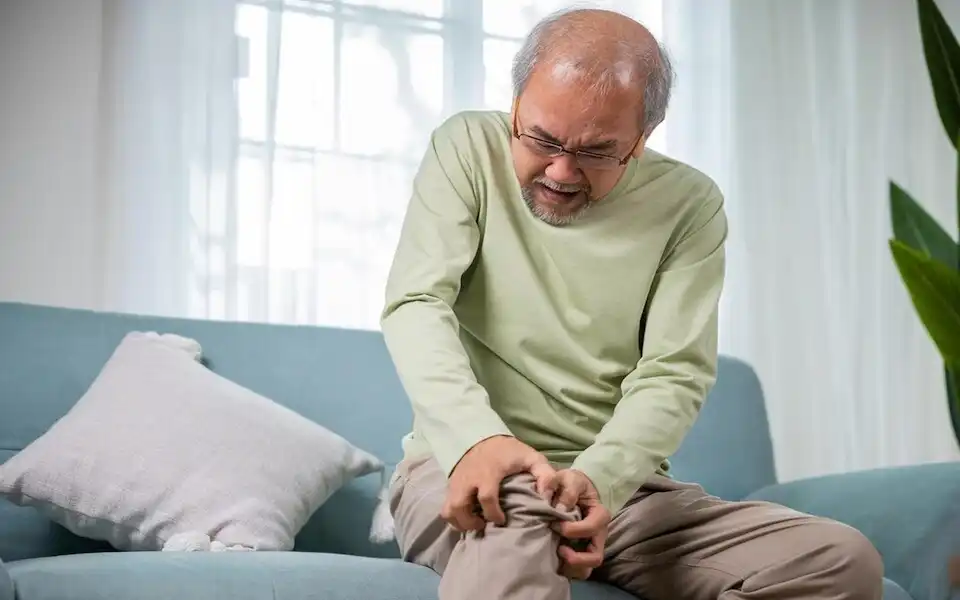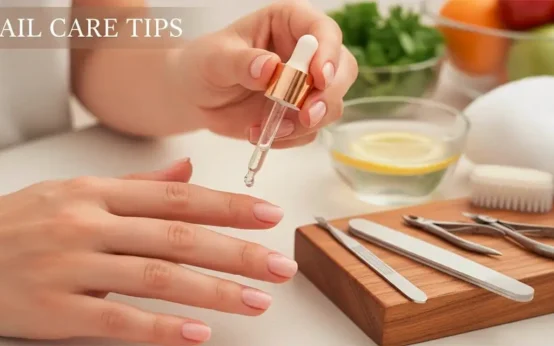Knee pain is a problem that a lot of older people have to deal with. It can make it hard for them to move around, stay independent, and enjoy life in general. Wear and tear on our joints, along with other health issues, can make knee pain last for a long time as we get older. But there is good news: knee pain can be managed. If you take the right steps, you can lessen the pain and even make the joint work better.
Understanding Knee Pain In Older Adults
The normal aging process and some medical diseases mostly cause knee pain in older people. One of the main reasons is osteoarthritis, a degenerative joint disease in which the knee joint’s protected cartilage breaks down over time. This causes pressure between the bones, swelling, and pain. Besides arthritis, other reasons could be old injuries, damaged ligaments, torn meniscus, or, less often, infections and gout.
In old age, joints lose some of their flexibility, and the amount of synovial fluid that keeps them moving smoothly drops. These changes make it stiffer and less able to absorb shock. Symptoms can be minor pain and stiffness, especially after rest, or they can be very painful and swollen, making it hard to move. It is very important to pay attention to symptoms like pain that won’t go away, swelling, stiffness, or a limited range of motion. If these symptoms get worse or get in the way of daily life, you should see a doctor.
Lifestyle Adjustments To Relieve Knee Pain
One of the best ways to deal with knee pain is to make changes to your lifestyle that take pressure off your knees and make the muscles around them stronger.
Weight Management:
Extra weight puts a lot of stress on the knee joints, which makes knee pain more likely and worse when it happens. Studies have shown that losing even a small amount of weight can make joint pain and worry a lot better. A healthy weight can be kept up by eating a varied diet and being active every day.
Exercise:
Low-impact workouts, like walking, swimming, and riding, are great for keeping muscles strong and joints mobile without putting too much stress on the joints. Strengthening the quads, hamstrings, and leg muscles around the knee helps keep the joint stable, which reduces pain and improves performance.
Physical Therapy:
It can be very helpful to work with a physical trainer. They make workout plans just for you that focus on strength, flexibility, and balance. This not only eases the pain but also keeps older people from falling, which is a typical worry.
Posture And Movement:
Using good body movements and balance can keep your knees from having to work too hard. Avoiding long periods of sitting or standing, wearing shoes that are designed to support your feet, and changing activities that hurt your knee can also help ease the pain.
Home Remedies And Pain Management Techniques
Simple home treatments that are easy to get and safe help a lot of older people with knee pain.
- Heat and Cold Therapy: Using warm towels or heating pads to put pressure on muscles can help them relax and increase blood flow, which can make them less stiff. Using ice packs for cold treatment can help reduce swelling and numb painful areas, especially after exercise.
- Over-the-Counter Medications: Nonsteroidal anti-inflammatory drugs (NSAIDs), like naproxen or ibuprofen, are often used to ease pain and swelling. However, these should only be used carefully and with a doctor’s supervision, especially by older people, because they might cause stomach problems or mix badly with other medicines.
- Supportive Devices: Knee bands, covers, or artificial inserts can help keep your knee stable and ease pain by lining it up better. Walking tools like walkers and canes can also help move your weight away from your painful knees, making it easier to move around and safer.
Medical Interventions And Treatments
When living changes and home cures don’t work, medical care may be needed.
Specialist Consultation:
Seeing an orthopaedic doctor or rheumatologist can help you figure out what’s causing your knee pain and how to treat it properly.
Injections:
Corticosteroid shots help temporarily ease pain and reduce swelling in the knee joint. Hyaluronic acid shots may help some people move better and feel less pain because they lubricate the joints. A lot of the time, though, these methods only work for a short time.
Surgery:
Suppose you have serious joint damage or pain that doesn’t go away with other treatments. In that case, you may be able to benefit from surgery like arthroscopy (which cleans the joint), osteotomy (which realigns the bones), or a partial or full knee replacement. Knee replacement surgery has come a long way and can greatly improve pain and movement, but it takes time to heal and rehabilitate.
Preventive Measures To Protect Knee Health
Avoiding knee pain is the best way to keep your joints healthy over time.
- Muscle Strength and Flexibility: Strengthening the muscles around the knee and keeping your flexibility up are two things that you can do regularly to make your knees more stable and less stressed.
- Nutrition and Supplements: Joint health is improved by eating a lot of anti-inflammatory foods, like fruits, veggies, and omega-3 fatty acids, which are found in fish and flaxseed. Supplements like glucosamine and chondroitin may help some people, but there isn’t a lot of solid proof for this. Before taking vitamins, you should always talk to your doctor.
- Avoiding Dangerous Activities: You can keep your knees from getting worse by limiting activities that cause repeated strain, lifting big things, or playing sports with a lot of impact.
Mental And Emotional Well-being
Having constant knee pain can affect your mental health, making you angry, depressed, or lonely. Along with physical therapy, it’s important to deal with these things.
- Coping Strategies: Mindfulness, meditation, and mild exercise like yoga or tai chi may help decrease stress and increase pain tolerance.
- Support networks: Talking to people who are going through the same problems as you can be very helpful and comforting. You can do this through support groups or neighbourhood programs.
Conclusion
Figuring out what’s causing knee pain as you get older, making changes to your lifestyle, using home treatments, and getting the right medical care when needed are all things that can help. A lot of older people can greatly improve their knee pain, recover their movement, and live a busy, satisfying life with constant effort and professional help.




 Importance of Hydration for Your Brain, Body, and Everyday Energy
Importance of Hydration for Your Brain, Body, and Everyday Energy  Healthiest Breakfast Cereal for Children
Healthiest Breakfast Cereal for Children  Anxiety Management Techniques
Anxiety Management Techniques  How To Remove Sun Tan From Hands
How To Remove Sun Tan From Hands  What Makes Fat in Our Body?
What Makes Fat in Our Body?  How to Take Care Your Nails
How to Take Care Your Nails